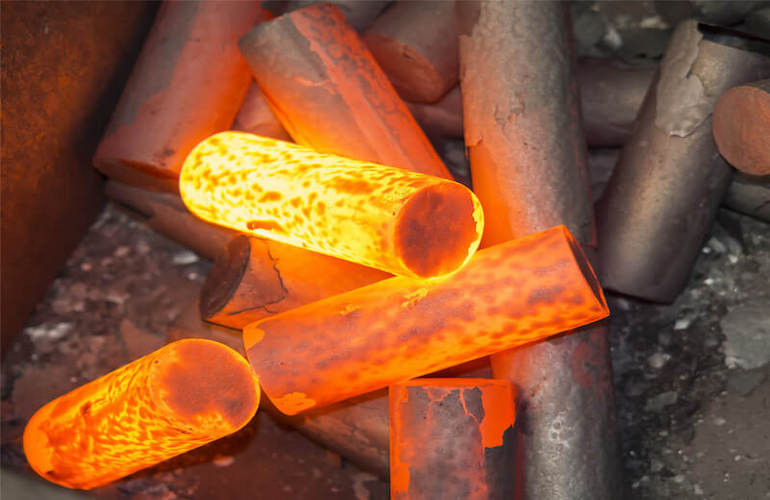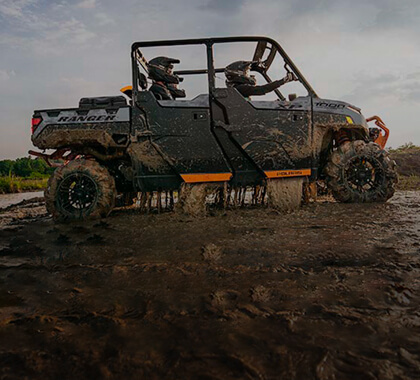A Crash Course On Aluminum Polaris Ranger Parts And Accessories
Jun 16th 2022
With your Polaris Ranger being responsible for carrying you to and from so many locations throughout the year, outfitting it with the best parts available is pretty important, right?
But how do you distinguish good Polaris Ranger parts from bad Polaris Ranger parts, and mediocre Polaris Ranger parts from the best Polaris Ranger parts?
You might be asking yourself: What materials are the strongest and most durable? Is cast aluminum best? Or is machined billet aluminum stronger? And what about all of those forged aluminum parts you keep hearing people talk about lately?
Well, you’re in luck, because today we are going to cover each of those materials to help you decide which one is best once and for all!
Cast Aluminum Polaris Ranger Parts and Accessories

Automotive parts made from cast aluminum have been around for a while, and clearly aren’t going anywhere. So what makes them special?
They’re cheap, for starters.
Casting aluminum is a well-known and relatively straightforward process. The aluminum ore is melted and formed into blocks that are then shipped to a manufacturer. The manufacturer then melts down the metal again, and pours it into casting moulds to form the parts that are needed.
Products such as engine blocks, pistons, certain Polaris Ranger Portal Gear Lifts, and other aftermarket Polaris Ranger accessories are made from cast aluminum. The material is cost effective, as is the fabrication process. And the finished product is strong enough to withstand the moderate abuse of a modern UTV driver.
So what else could you possibly want? All of your bases and needs are covered, right?
Not so fast…
Machined Billet Aluminum Polaris Ranger Parts

Billet aluminum, unlike cast aluminum, arrives at the manufacturer in a much more “pure” form. Instead of being melted down multiple times to be cast into the desired product, the material comes as a fresh block of unadulterated metal, which is then machined down to perfection. CNC machines and computer operated lathes are programmed with a product designed to the manufacturer's exact specifications, and the billet aluminum is then milled and carved into a nearly perfect product.
This process leaves much more of the aluminum’s original structure intact, which results in a much stronger end product. And the fact that it isn’t melted down multiple times ensures that no weak points exist, and it maintains the material's rigid crystalline structure at the molecular level.
This type of machining also allows for a much more precise and intricate design process, with parts matching the exact specifications for the customer or manufacturer. Not to mention the machining process leaves behind the most aesthetically pleasing variation of the three techniques we are covering today!
A most popular and common Polaris Ranger billet aluminum accessory would be the casings of a Polaris Ranger Portal Gear Lift. But even smaller parts such as this Polaris Ranger 700 Billet Water Pump Impeller By Quad Logic are made this way, and provide greater performance when compared to the stock plastic ones your rig came with.
Forged Aluminum Polaris Ranger Parts and Accessories

Making forged aluminum parts for the Polaris Ranger, the Polaris Ranger XP, and other off-road 4x4s is done quite differently than both the casting and subtracting methods.
Instead of melting down the aluminum or carving away material using a computerized mill, forging resorts to brute force… quite literally. A very large and powerful hydraulic press uses several thousand pounds of force to form aluminum into the shape of the part in question. The press is literally smashing and pressing the aluminum into shape.
Why is this a good thing?
It's good because forging aluminum parts results in the least amount of change to the material’s original structure. There is no further melting, and no tooling or carving of the material. This process usually uses billet aluminum as well, which means the beginning material is of the same quality as machined billet aluminum parts.
What this means is we are left with a part that is even stronger than machined billet aluminum.
One increasingly common forged aluminum part to look out for will be utilized on a set of Polaris Ranger Grenade Beadlock Forged Wheels by KMC, where the beadlock itself is made of forged aluminum to ensure the strongest possible hold in the roughest possible conditions.
Which Aluminum Polaris Ranger Parts Are Best?

If it looks like that question is hard to answer, that's because it is!
Cast aluminum parts are much more cost effective, and readily available. But they aren’t as strong of a final product as machined or forged billet. Machined billet aluminum parts are notably stronger and better looking, and the manufacturing process for machined billet is quite versatile. But the price of these parts also reflects this. And forged aluminum is super strong and durable, but lacks the availability due to the complexity of the process.
So consider this question: Do you need a machined billet aluminum gas cap? Maybe not. Will it look better on your build? Almost definitely.
Or a better question would be: Do I want a cast aluminum product that fits within my budget, or should I spend more now on a product that'll pay off for itself and then some 3-4 years down the line?
All options will do the job, without a doubt. But just as with anything in life, there are pros and cons, and it is time for you to weigh them!


